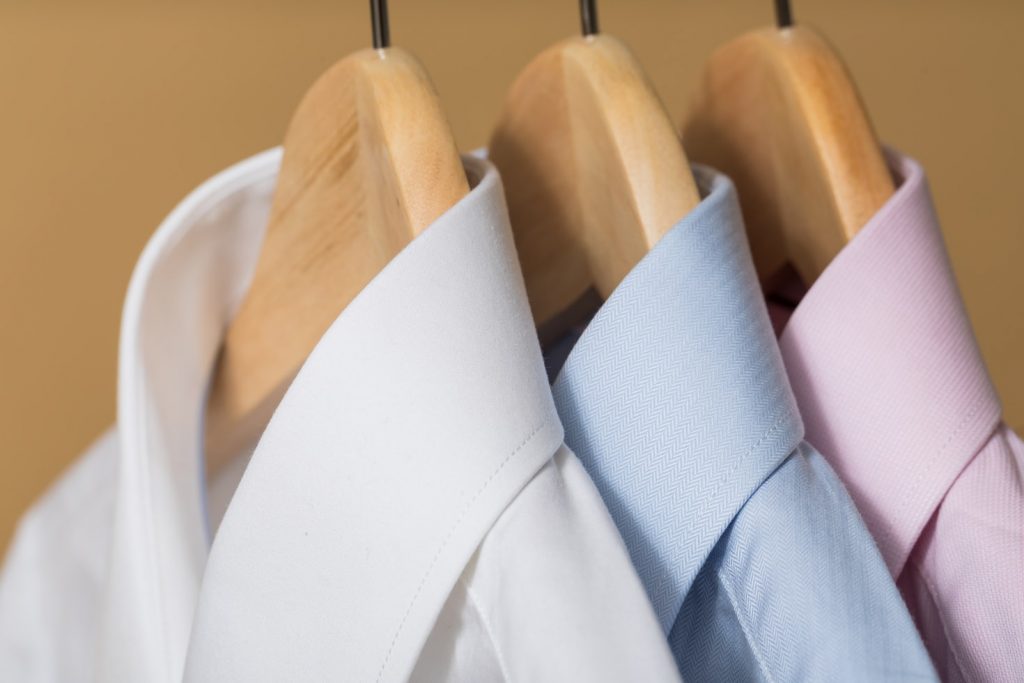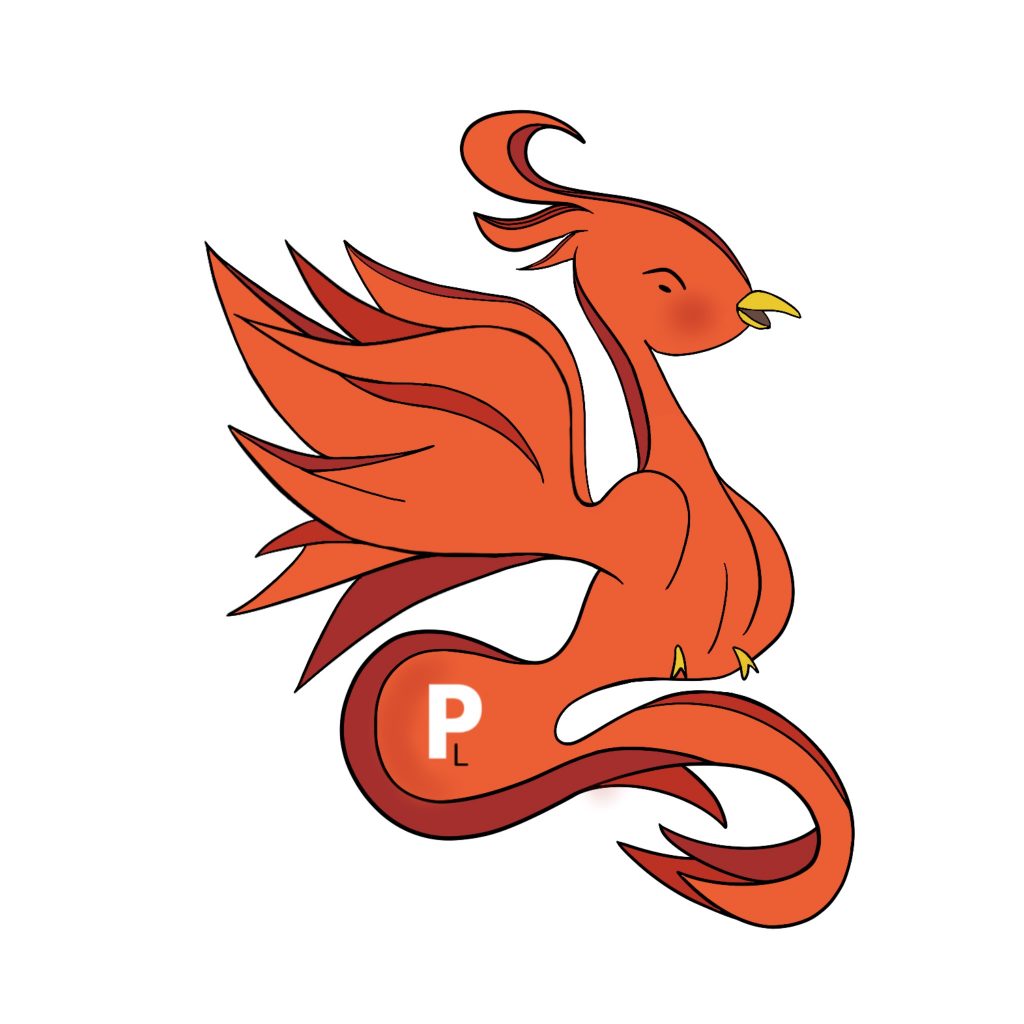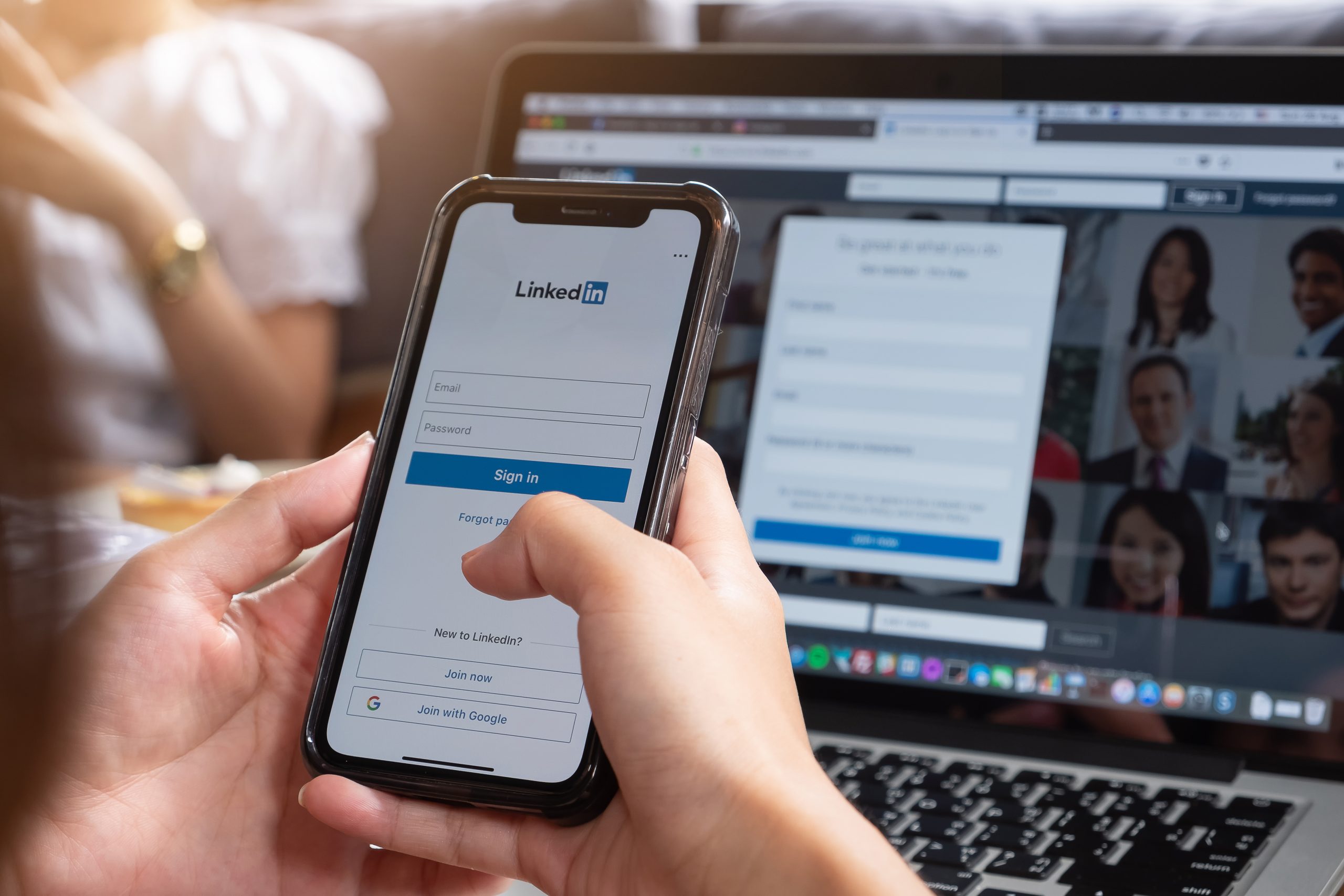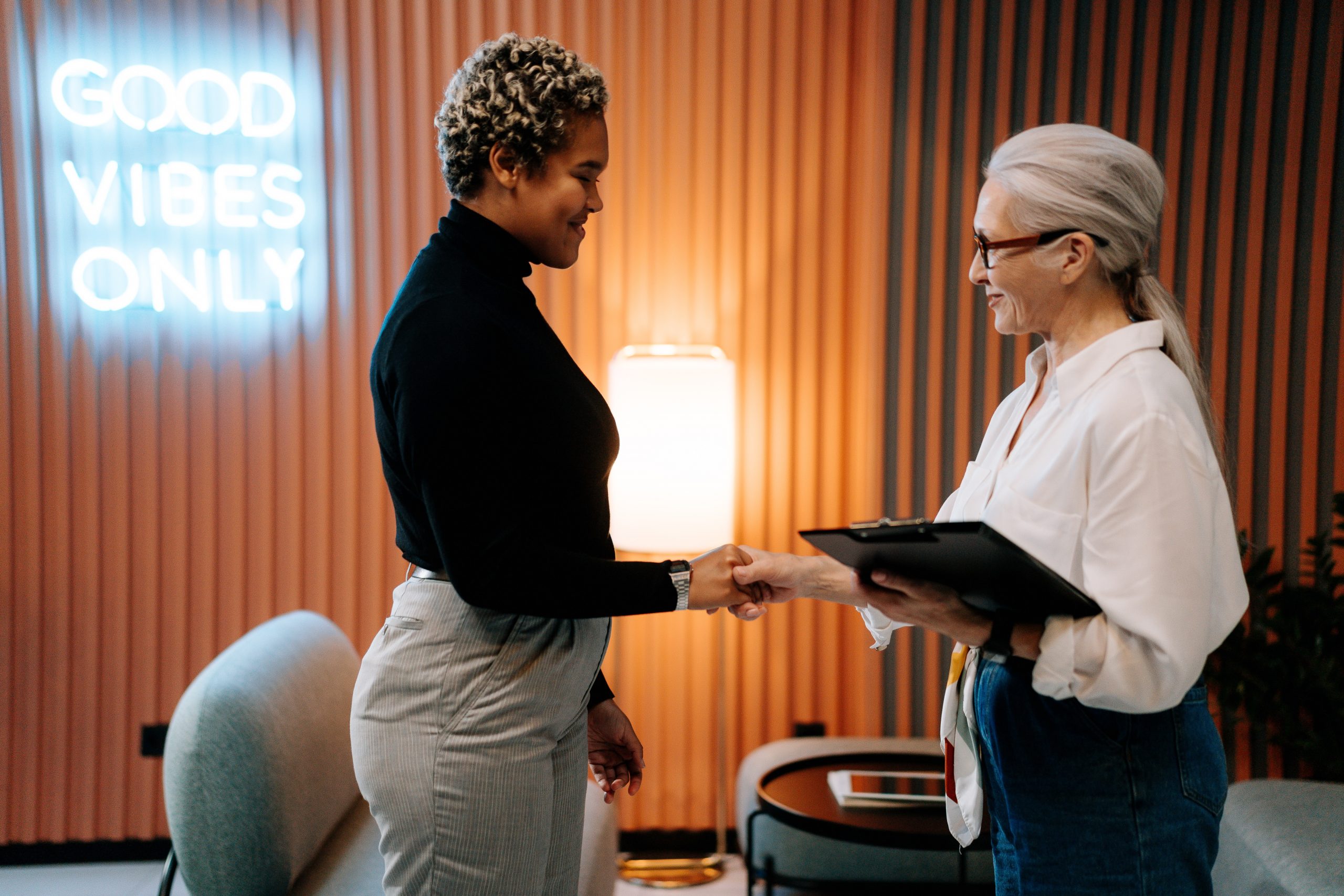The modern workplace is evolving.
Dressing ‘professionally’ in suits and dresses can be traced back through the eras as a sign of wealth and status. By presenting oneself as smart and using fine fabrics to create elegant outfits, you could elevate your status and appear far better off than you were. Even certain coloured garments could improve your status – purple items of clothing were once reserved for royalty only.
Whilst dressing in purple is no longer reserved for royalty, some fashion trends have continued throughout history. The suit, originally tailored for the upper and middle classes has exhibited huge staying power in the British workplace. Offices and ‘skilled’ jobs will often require staff to wear business-casual clothing or smart clothing in the office. This adds to the air of sophistication that jobs of this calibre will want to portray.
The idea of wearing professional clothing gave the idea that workwear was linked to workplace efficiency as though a suit would make you work faster and perform better at the job. Not only is this notion false but it has been disproven by modern times.
The modern workplace is evolving.
With the pandemic giving rise to a more flexible and relaxed working schedule that allows staff to work from home; the workwear culture is changing more rapidly than before.
Many of us have sat through Zoom meetings and dressed for shoulders-up appearances in online calls with our bosses and colleagues. Our wardrobes contain more loungewear than the polyester trousers we once wore every day.
The question is, will the new workwear culture affect productivity?
Pre-pandemic workwear consisted of the classic business-casual style that many of us have been used to. This style meant various shades of black and grey polyester trousers and smart blouses or shirts – often paired with smart shoes and blazers of complementing colours.
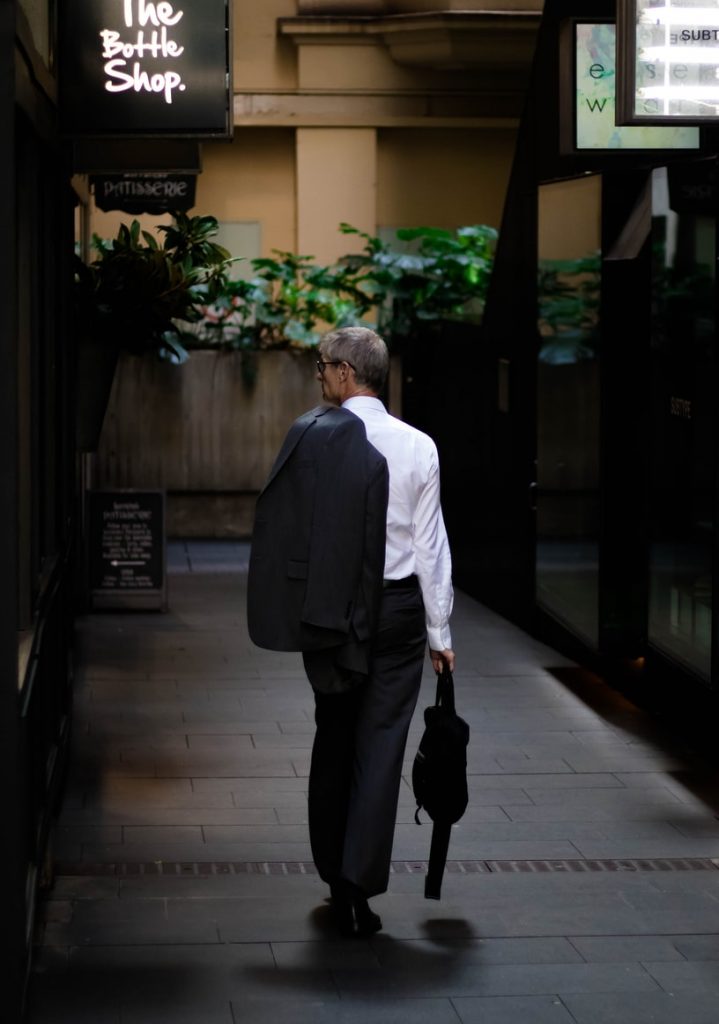
This style of workwear can come under two different categories: business attire and business casual. Business attire refers to the more traditional approach of suits and ties however business casual – which is more commonly found in workplaces – is more relaxed and informal.
Business attire is still synonymous with money, status, and importance.
The media has furthered the narrative that you must look the part to do the part – continuing from the outdated idea of workplace efficiency.
Think of your favourite shows and how the characters look – are the scruffier looking characters portrayed as lazy and unable to do their job? Are the smart executive characters excelling at their jobs whilst wearing freshly pressed fitted suits?
Has post-pandemic fashion begun to dismantle these stereotypes?
Think how many of us worked through shifts with the hoodies we wore the day before or the pyjamas we slept in. How many of us sipped our morning coffee wrapped in blankets and jogging bottoms whilst writing emails to our bosses?
Even outside of the working world, students of all educational levels will relate to the switch from in-house learning to online lectures and digitally set homework.
The workwear trends have advanced greatly in Pandemic times, and fashion vendors have had to adapt their strategies. Online vendors such as Boohoo and Pretty Little Thing have brought out cheaper workwear styles that resemble our comfortable clothes with colours ranging from beige to bright orange so the personality of the individual can be injected into the everyday workwear.
Staff are no longer limited to monochromatic colour schemes which have made the workplace a fun, more inviting environment for many members of staff.
To learn more about preferences on workwear, we launched an office wide survey to gather more information.
Through this survey, we noticed the following trends:
– Staff between the ages of 19 and 30 believed that workwear did not affect efficiency and preferred a more casual approach to workwear. They chose comfort over businesswear as this made them more comfortable in the workplace and less likely to be distracted by their clothes – examples included itchy dress shirts and uncompromising trousers.
– Some staff agreed that if a job is customer facing then uniforms and particular business workwear styles are necessary as you are the face of the company to a customer. They believed that you need to be presentable and smart as you are the face they’ll remember when thinking of the company.
– Staff over the age of 30 believed that a stricter business style is important for work ethic and efficiency much like a school uniform would be. By dressing for the job, you place yourself in a mindset to work unlike wearing pyjamas where you may be more likely to relax because you are wearing relaxed clothing.
– Almost all of the responses said that by having a casual Friday, it created a happy medium and a great start to the weekend.
Whilst open-toe sandals and jorts may not make the list of appropriate work clothing anytime soon, the pandemic has facilitated a radical shift in office wear, giving rise to a better range to suit all shapes and sizes with fewer appearances from the dreaded polyester trousers.
Perhaps the styles will further evolve as we find ourselves going back to normal.
Follow our socials to be kept in the loop for future updates on this topic.

By Atticus Carter
28/10/2021
Discover More
Categories
Contact Us
Read More From Phoenix Learning
How To Make The Most Out Of Your Linkedin Profile
The jobs market is changing. The days of walking into a business and handing in your CV is slowly fading...
Read More ➤Equality & Diversity: Supporting Learning Difficulties
How can employers cultivate a workplace of equity and diversity? We wanted to illustrate ways an employer can support employees...
Read More ➤The Toxicity of Hustle Culture: Why Balance is Key
When Covid haltered standard living, we were told to stay productive, keep our spirits high, find a new 'hustle'. This...
Read More ➤